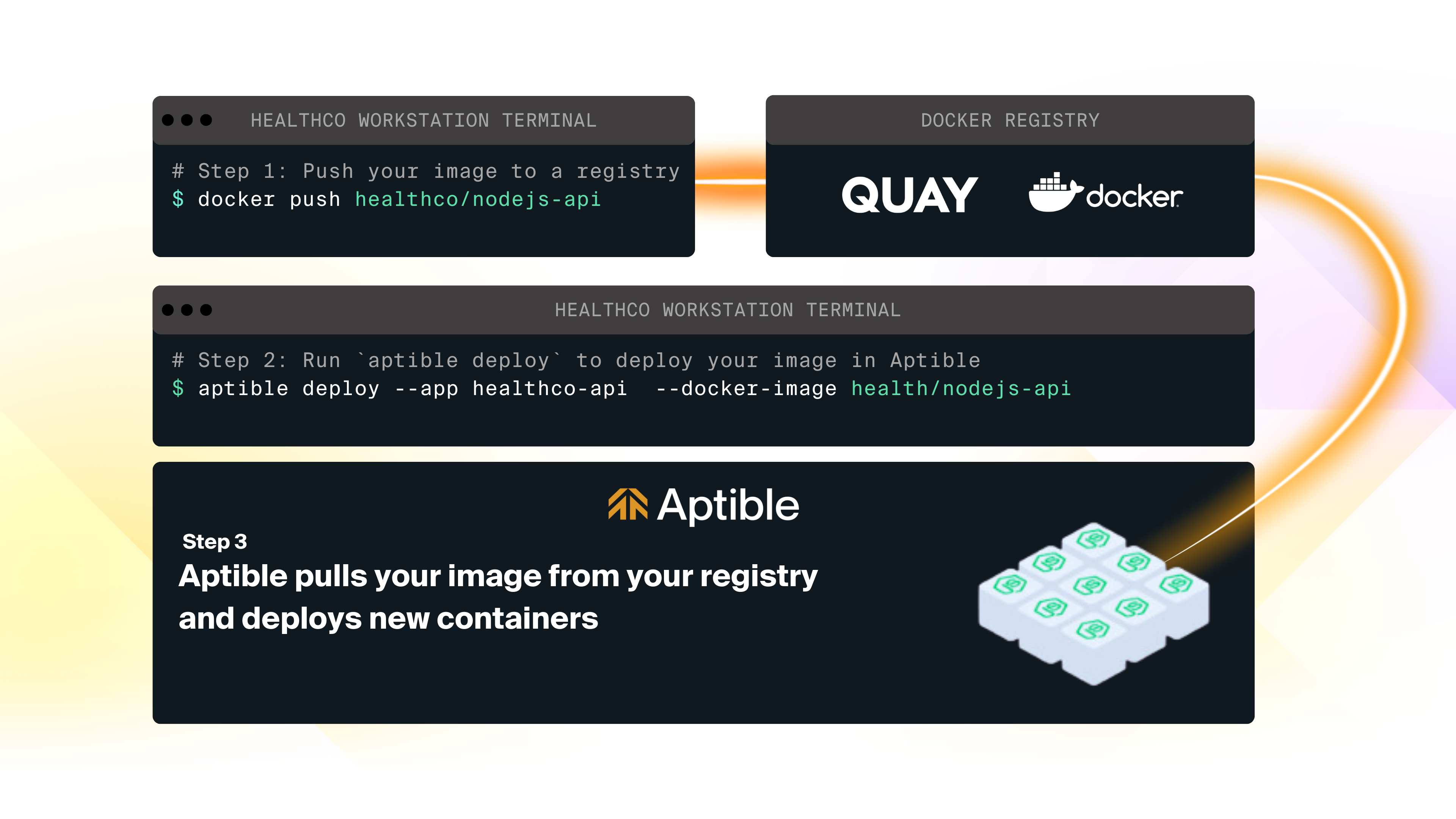Core Concepts
Reference
Troubleshooting
Feedback
Deploying with Docker Image
Learn about the deployment method for the most control: deploying via Docker Image

Overview
If you need absolute control over your Docker image's build, Aptible lets you deploy directly from a Docker image. Additionally, Aptible's Terraform Provider currently only supports Direct Docker Image Deployment - so this is a benefit to using this deployment method.
The workflow for Direct Docker Image Deploy is as follows:
- You build your Docker image locally or in a CI platform
- You push the image to a Docker registry
- You use the
aptible deploycommand to initiate a deployment on Aptible from the image stored in your registry.
Private Registry Authentication
You may need to provide Aptible with private registry credentials to pull images on your behalf. To do this, use the APTIBLE_PRIVATE_REGISTRY_USERNAME and APTIBLE_PRIVATE_REGISTRY_PASSWORD Configuration variables.
📘 If you set those Configuration variables, Aptible will use them regardless of whether the image you are attempting to pull is public or private. If needed, you can unset those Configuration variables by setting them to an empty string ("").
Long term credentials
Most Docker image registries provide long-term credentials, which you only need to provide once to Aptible.
With Direct Docker Image Deploy, you only need to provide the registry credentials the first time you deploy.
aptible deploy \
--app "$APP_HANDLE" \
--docker-image "$DOCKER_IMAGE" \
--private-registry-username "$USERNAME" \
--private-registry-password "$PASSWORD"Short term credentials
Some registries, like AWS Elastic Container Registry (ECR), only provide short-term credentials. In these cases, you will likely need to update your registry credentials every time you deploy.
With Direct Docker Image Deploy, you need to provide updated credentials whenever you deploy, as if it were the first time you deployed:
aptible deploy \
--app "$APP_HANDLE" \
--docker-image "$DOCKER_IMAGE" \
--private-registry-username "$USERNAME" \
--private-registry-password "$PASSWORD"